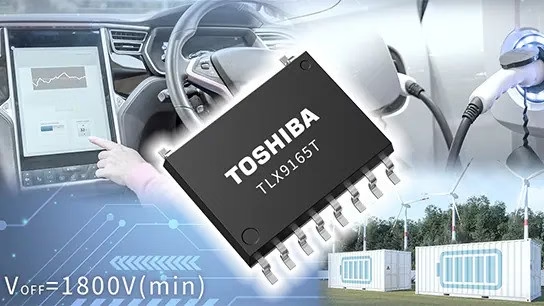Accelerating Electric Vehicle Innovation
The electric vehicle (EV) industry is rapidly evolving to meet growing demand for higher performance, longer range, and faster charging capabilities. Central to this advancement is the enhancement of battery management technologies that ensure both efficiency and safety. With increasing shifts toward 800V battery systems—double the voltage of current mainstream 400V systems—components capable of handling higher electrical stresses are essential. Efficient Battery Management Systems (BMS) and Energy Storage Systems (ESS) rely heavily on reliable isolation and switching technologies to safely control these high voltages, adapting to the challenges posed by evolving EV technology.
In this context, insulating components such as photorelays play a critical role by electrically isolating control circuits from high voltage loads, preventing ground faults and ensuring system integrity. Incorporating high-voltage photorelays elevates the safety and operational reliability of battery systems while meeting stringent standards for automotive applications. This makes innovations in photorelay design vital to the future of electric mobility and renewable energy infrastructure.
Breakthrough in High-Voltage Photorelay Technology
Toshiba Electronic Devices & Storage Corporation has introduced the TLX9165T, a groundbreaking automotive photorelay engineered for 800V automotive battery systems with a minimum output withstand voltage of 1800V. Encapsulated within a 10-pin SO16L-T package, this device is designed to sustain voltages well above current automotive demands, aligning with emerging industry trends toward higher-voltage battery packs that offer faster charging and longer cruising ranges.
This photorelay integrates a newly developed high-voltage MOSFET optimized for stringent automotive environments. It provides critical electrical isolation required in BMS assemblies, enabling safe battery voltage monitoring and fault detection. Toshiba’s innovation ensures that the photorelay withstands at least twice the system voltage, addressing the evolving electrical insulation requirements while maintaining compact design compatibility with existing PCB layouts.
Automotive and Energy Storage Applications
The TLX9165T is tailored specifically for electric vehicles and industrial energy storage applications. Within EVs, it supports BMS functions that monitor battery charge status and detect mechanical relay sticking or ground faults—tasks essential for ensuring operational safety and longevity. In renewable energy sectors, the photorelay is equally critical for Energy Storage Systems, which share similar voltage demands and insulation needs as automotive batteries, enabling efficient control over large-scale energy reserves.
Replacing traditional mechanical relays with such photorelays significantly improves system reliability by reducing mechanical wear and electrical noise. Moreover, the TLX9165T’s compliance with the AEC-Q101 automotive standard and international insulation standards (IEC 60664-1) ensures robust performance under harsh automotive conditions.
Design and Safety Features
Toshiba’s photorelay package employs a resin with a Comparative Tracking Index (CTI) of 600 or higher, classifying it within material group I under IEC 60664-1, and providing a creepage distance of 7.5mm or more to withstand high voltages with minimal risk of electrical tracking or breakdown. The device supports an isolation voltage of at least 5000 Vrms, confirming its capability to insulate sensitive control circuitry from high-voltage power components effectively.
Other notable features include a normally open (1-Form-A) configuration, avalanche current rating of 0.6mA, and a maximum on-state resistance of 340 ohms, all designed to enhance overall system stability and efficiency. Its pin configuration matches previous SO16L-T designs, allowing engineers to integrate the new photorelay without redesigning circuit boards, thereby easing adoption in existing platforms.
Contribution to EV Market and Sustainability
The development of the TLX9165T photorelay supports the electric vehicle industry’s push toward higher-voltage battery architectures, directly contributing to faster charging times and extended driving range—two critical factors influencing broader EV adoption. By improving the safety and reliability of battery control systems, Toshiba enhances consumer confidence in electric mobility.
Beyond automotive use, its role in industrial energy storage aligns with global sustainability goals by aiding renewable energy efficiency and grid stability. As the automotive and energy sectors continue to electrify, innovations like Toshiba’s high-voltage photorelay provide essential components that bridge emerging technological needs with stringent safety and performance standards.
This comprehensive advancement underscores the crucial synergy between electronic component innovation and the accelerating electric vehicle market, highlighting Toshiba’s commitment to enabling safer and more efficient high-voltage systems integral to the future of transport and energy.







